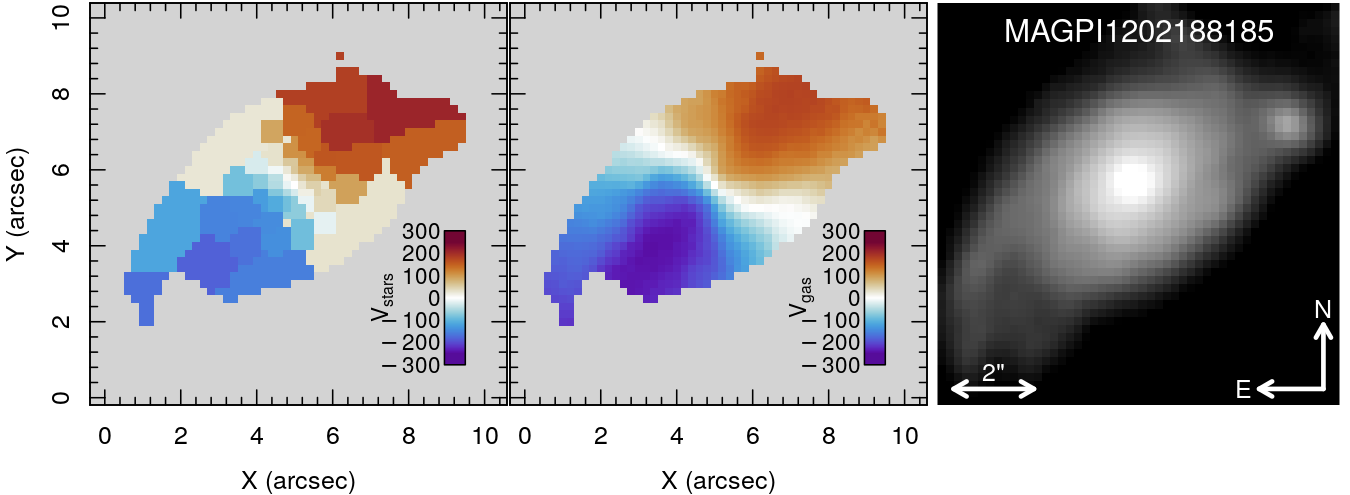The MAGPI team has now reached a significant milestone, recently submitting a paper to the Publications of the Astronomical Society of Australia introducing the survey, including its design and science goals. The paper showcases the exquisite quality of the data-rich MUSE observations, and shares theoretical insights demonstrating how MAGPI will confront the discrepant predictions from cosmological hydrodynamical simulations with spatially resolved galaxy observations at z~0.3.
The figure above shows the stellar (left) and ionised gas (middle) velocity fields for MAGPI galaxy 1202188185. The synthetic white-light image (right) produced using the MUSE data cube shows clear spiral arm features. MAGPI data will enable the mapping of the properties of both the ionised gas (when present) and stars in ~160 galaxies during the Universe’s middle ages (i.e. redshift z~0.3).
To learn more about the MAGPI project (and sign up if you’d like to get involved), please visit the MAGPI web site, and follow us on Twitter at @MagpiSurvey.

